At first blush, it seems simple to locate Mount Pleasant, the home of Gen. John Butler. William Galbreath operated a ferry at the site of a traditional ford on the Haw River, about a mile above Swepsonville at the mouth of Back Creek. The 1778 State land grant to William Galbreath looks like this:
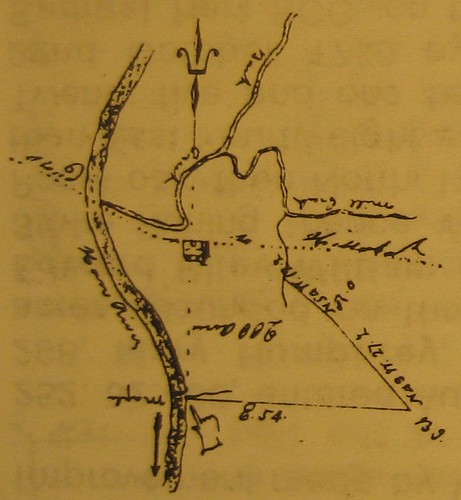
And in the accompanying legal description of the Galbreath grant, it clearly states that John Butler’s plantation was just south of there. However, the next state land grant to the south of Galbreath’s was a claim entered by John Armstrong, the man who built the first mill at what later became Swepsonville. Armstrong’s state land grant extended from Galbreath’s to a point well south of the Swepsonville mill site. At the same time, land grants still further south and east of Armstrong sometimes refer to “Butler’s Corner” or “Butler’s Line.” Drawing these land grants and piecing them together like a jigsaw puzzle, I can clearly see that both ends of the 1778 Armstrong grant are referred to by neighboring grants as Butler's. I am not sure why this was done this way, but John Armstrong apparently claimed that land in a sort of trust for his sister Ann Armstrong Butler, the wife of Gen. John Butler. Perhaps it related in some way to the fact that Gen. Butler was the State land grant agent for Orange County.
Unfortunately, Armstrong's land grants stop short of the Virginia Mills Powerhouse #2, and no other state land grants seem to show that site. CORRECTION: The land where my powerhouse stands was originally granted by the state to Samuel Hunter.
John Armstrong's Other Mill
As I said, John Armstrong owned and built the first mill in Swepsonville, prominently shown on the 1770 Collett map:
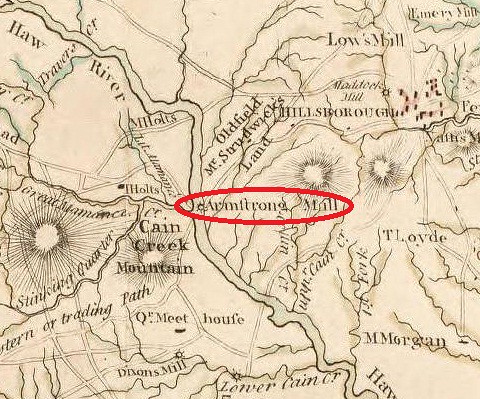
John sold the mill in Swepsonville to John Trousdale shortly before Armstrong's death at the end of 1790, but Trousdale only bought the mill itself on two acres. Apparently the remaining 638 acres more or less comprised Mount Pleasant and does not appear to have passed through John Armstrong's estate.
Armstrong also owned another mill on Haw Creek somewhat downstream of NC-54; he sold that mill to Joseph Hodge and Richard Christmas in April of 1790 (Orange DB 4, pg 692). Around 1840, that mill was purchased by Alexander Wilson who operated the school in Melville. By 1893 the site was known as Newlin's Mill as shown on William L. Spoon's marvelous map of Alamance County:
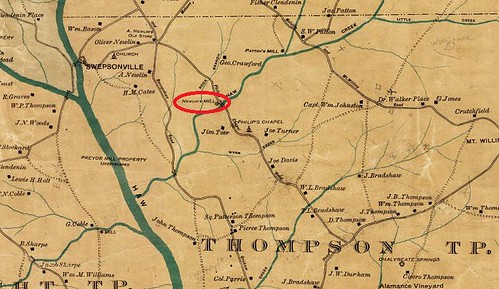
Here's a picture of the broken down Armstrong-Wilson-Newlin dam on a day when Haw Creek was high enough to paddle:
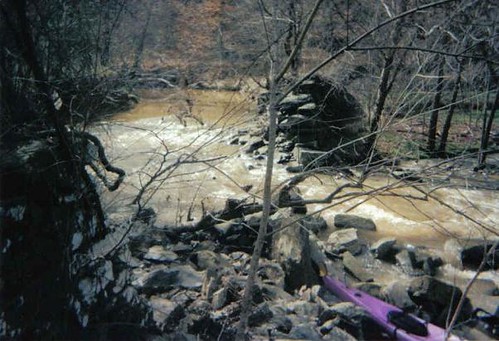
The Heirs of John Armstrong
The will of John Armstrong, dated Nov. 25, 1790, proved Feb. 1791, (Orange WB B, pg 121) mentions his daughters: 1) Elizabeth, 2) Mary, 3) Margaret, & 4) Rachel. Armstrong named his brother-in-law, Richard Christmas as one of the executors of this will. Briefly, regarding the daughters of John and Margaret Armstrong:
1) Elizabeth ‘Betsy’ Armstrong married a man named Stephen Glass in 1809. Glass owned, among other things, a mill on Back Creek. Elizabeth died in 1847. Sallie Walker Stockard’s History of Alamance says that Seymour Puryear owned “the Widow Glass’ property and that of Hunter and Wagstaff.” And we know that this same Seymour Puryear owned a gristmill, which he sold to Virginia Mills in 1881. But it is unclear how he came to own this mill or whether that property is the one that came from ‘the Widow Glass.’ CORRECTION: This land probably came from the Hunter family, not Mrs. Glass. This mill site, the Puryear Mill site, is where Virginia Mills Powerhouse #2 was built in 1905. I own that site now as the proprietor of Swepsonville Hydro, LLC:

2) Mary Armstrong (c. 1770- 11/4/1833) married Elisha Smartt in Orange Co., Mar. 7, 1792. Mary’s will, dated Nov. 1, 1833, (Mecklenberg Co. WB G, pg 147) gives her children’s names: Robert T. Cheek, John S. Cheek, Sarah B. Cheek and Rebecca Armstrong Marks. The last name Cheek is confusing, but apparently these were illegitimate children fathered by Silas or Cylas Cheek (see Meck. WB A, pg 196). In her will Mary Armstong Smartt refers to "sale of my land in Orange County."
3) Margaret Armstrong married John Sankston on Mar. 21, 1800, in Orange Co.
4) Rachel Armstrong apparently never married. Her will (OCWB E, pg 143; dated 13 Feb 1823; proved August Court 1827 left her estate to her niece Anne Glass, daughter of Stephen and Betsy [Armstrtong] Glass.
The Heirs of John Butler and Ann Armstrong
As I said, John Armstrong’s sister Ann married Gen. John Butler. Gen. Butler and Ann Armstrong had no children. Gen. Butler’s will was written May 20, 1785 (OCWB B, pg 1), and probably probated in January 1787. In the will he left everything to his “beloved wife.” That is, Ann Armstrong Butler.
After Gen. Butler’s death, Ann Armstrong married Maj. Richard Christmas, December 22, 1788, in Orange County, NC. There were no children by this marriage either. Ann died and left Maj. Christmas a widower. The will of Richard Christmas, dated June 25, 1830, proved May 1833, (OCWB E, pg 300) bequeathes slaves to Mary Armstrong Smart and Peggy Armstrong Sankston, "niece[s] of my deceased wife," but does not devise the Butler real estate. Gen. Butler’s nephew – a descendant of Regulator William Butler – sought to reclaim the Butler real estate that had been in the hands of Richard Christmas (as would have been Richard’s lifetime right in the lands inherited by his wife). Richard Christmas had apparently assumed that the lands would go to the Butler family and consequently did not devise them in his will. However, it appears that the Butlers ultimately failed and the land passed to the heirs of Richard Christmas.
The Heirs of Richard Christmas
So who were they? And what became of Mount Pleasant? I will post updates here when they trickle in. In the meantime, here are some other Swepsonville photos to enjoy.
The old Powerhouse #1 at Virginia Mills in Swepsonville, formerly the site of Armstrong's Mill, then Trousdale's Mill, then Murphey's Mill, then Ruffin's Mill, then Falls Neuse Manufacturing:

An aerial photo of the Swepsonville mill site:
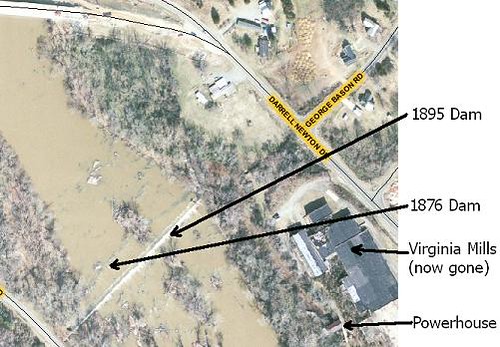
Thanks to Mark - more research has netted a BRAND new NC State Historical Marker begin errected - to commemorate John Butler. John's plantation will be marked in March or April 2012. Based on our (Jeff Bright - ACC) brand new book - Pyle's Defeat, The Most Comprehensive Guide - we submitted an application for a new marker - and it was APPROVED Dec 19, 2010. A sign unveiling will be provided - when the date is finalized. In the application - I specifically requested the Marker to be errected near town, and NOT on the major highway. The Dept of Cultural Resources has petitioned the DOT for that specific request. Now we wait. Despite the location of the marker - John Butler will finally receive a long awaited - recognition of his amazing support to the State of NC and Orange County (old boundary) - as sheriff, land grant entry taker, Militi General, politician etc. - Stewart - THANKS MARK for you assistance.
ReplyDelete